Study of Flow and Heat Transfer for the Supercritical Hydrogen in Spallation-Type Cylindrical Neutron Moderator
Abstract
:1. Introduction
2. Mathematical and Physical Model
2.1. Physical Model
2.2. Governing Equations
2.3. Boundary Conditions
- Temperature is an important parameter having impact on the thermophysical properties of fluids, such as density ρ, specific heat capacity cp, viscosity μ and thermal conductivity λ, which all influence the heat transfer and transport properties of fluid. The container is made of aluminium alloy 6061, whose conductivity is 23 W/(K·m). The inlet flow and inlet temperature are set to 40 g/s and 18 K, with pressure outlet is applying. Moreover, non-uniform heat source of CHM under 100 kW and 500 kW are import to CFX software through User Defined Function (UDF) function.
- The numerical simulation of liquid hydrogen flow in CHM carried out by software CFX 2021. The wall treatment adopts the standard wall function, and symmetric is employing. The container wall is set to be adiabatic, Semi-Implicit Method for Pressure Linked Equations (SIMPLE) algorithm (Figure 4) is chosen for the velocity-pressure coupling method, and meanwhile the second-order upwind scheme is adopted. To ensure calculation accuracy, the solver sets enough convergent iterations to reach the convergence, and the Root Mean Square of the residual values (RMS) is set as 10−8 to acquire independent convergent solutions.
- Table 1 shows the comparison of heat source values acquired by CFX and MCNPX, and the small error between two software verifies the reliability of the coupling method. Figure 5 shows the heat source distribution inside CHM. The overall heat source of moderator was unevenly distributed, including thermal deposition of external container, hydrogen inlet pipe and liquid hydrogen both gradually increased along axial direction. The maximum value appeared in the bottom central area of container, with the specific value was about 2.8 × 105 W/m3.
2.4. Verification of Grid Independence
2.5. Thermophysical Properties of Hydrogen
3. Results and Analysis
3.1. Flow Field and Velocity Distribution
3.2. Distribution of Temperature
3.3. Effect of H/D
4. Conclusions
- The vortex size and velocity gradient from container wall to vortex center vary with distance H/D, whereas the center position of vortex basically remains unchanged during variation of height, which proves that overall flow field tends to be stable.
- With distance H/D increasing, the velocity at bottom target surface progressively decreased, and the flow cooling effect is poor, leading to the rise in temperature. When H/D = 6, the local bulk temperature of liquid hydrogen reaches the maximum value. The optimal range cooling performance is H/D = 0.5~1 at Re = 1.7 × 105.
- As beam power increases, the hydrogen temperature distribution in the center of cavity remains unchanged under different H, whereas, exhibiting a sudden enhancement about wall temperature near container corner. It shows that increase of power further strengthens thermal deposition difference between container and liquid hydrogen, that is, the former dominates.
Author Contributions
Funding
Institutional Review Board Statement
Informed Consent Statement
Conflicts of Interest
Nomenclature
| T | bulk temperature, K |
| E | energy, kJ/kg |
| P | static pressure, Pa |
| R | molecular gas constant, J/(mol·K) |
| L | characteristic length, mm |
| H | jet-to-surface distance, mm |
| D | nozzle diameter, mm |
| u | velocity, m/s |
| Reynolds number | |
| Sh | volumetric heat source, W/m3 |
| J | component diffusion flux, - |
| Tw | averaging temperature of wall, K |
| Tc | critical temperature, K |
| Tb | bulk temperature of fluid, K |
| Tr | reference temperature, K |
| temperature dependence function (alpha function) | |
| temperature dependence function (beta function) | |
| critical attractive parameter, MPa·m6·k·mol−2 | |
| b | molar co-volume, m3·k·mol−1 |
| f | body force, m/s2 |
| h | enthalpy, J/kg |
| p | ideal gas pressure, Pa |
| k | turbulence kinetic energy, m2/s |
| u | bulk fluid velocity, m/s |
| density, kg/m3 | |
| thermal conductivity of the fluid, W/m·K−1 | |
| ω | the specific dissipation rate, m2/s2 |
| dynamic viscosity, Pa·S | |
| σ | model constant, - |
| shear stress, N/m2 | |
| pc | critical pressure, K |
| specific heat capacity, J/kg·K−1 | |
| vPR | the molar volume, L |
| eff | effective thermal conductivity, W/m·K−1 |
| eff | effective stress tensor, N/m2 |
| w | boundary layer shear stress, N/m2 |
| coefficients of the Mathias and Copeman alpha function | |
| F1, F2 | mixing function, - |
References
- Zhang, J. Chinese Spallation Neutron Source (CSNS) A Great Scientific Platform of Multidisciplinary Application. Bull. Chin. Acad. Sci. 2006, 21, 415–417. [Google Scholar]
- Wei, J.; Chen, H.S.; Chen, Y.W.; Chen, Y.B.; Chi, Y.L.; Deng, C.D.; Dong, H.Y.; Dong, L.; Fang, S.X.; Feng, J. China Spallation Neutron Source: Design, R&D, and outlook. Nucl. Instrum. Methods Phys. Res. A 2009, 600, 10–13. [Google Scholar]
- Wang, F.W.; Jia, X.J.; Liang, T.J.; He, C.H.; Yin, W.; Zhang, S.Y.; Zhu, T.; Yu, Q.Z.; Wang, P. Physical design of the target station and spectrometers for a spallation neutron source. Physics 2008, 34, 449–453. [Google Scholar]
- Fu, S.N.; Chen, H.S.; Chen, Y.B.; Ma, L.; Wang, F.W. CSNS Project Construction. J. Phys. Conf. Ser. 2018, 1021, 012002. [Google Scholar] [CrossRef]
- Wei, J.; Fu, S.N.; Tang, J.Y.; Tao, J.Z.; Wang, D.S.; Wang, F.W.; Wang, S. China Spallation Neutron Source-an overview of application prospects. Chin. Phys. C 2009, 33, 1033–1042. [Google Scholar]
- Wang, F.W.; Yan, Q.W.; Liang, T.J.; Yin, W.; Zhang, P.L.; Fu, S.N.; Tang, J.Y.; Fang, S.S.; Zhang, Z.; Zhang, J. Netron Scattering and Spallation Neutron Source. Physics 2005, 34, 731–738. [Google Scholar]
- Aso, T.; Tatsumoto, H.; Hasegawa, S.; Ushijima, I.; Ohtsu, K.; Kato, T.; Ikeda, Y. Design Result of the Cryogenic Hydrogen Circulation System for 1MW Pulse Spallation Neutron Source (JSNS) in J-PARC. Adv. Cryog. Eng. 2006, 51, 763–770. [Google Scholar]
- Andersen, K.H.; Bertelsen, M.; Zanini, L.; Klinkby, E.B.; Schönfeldt, T.; Bentley, P.M.; Saroun, J. Optimization of moderators and beam extraction at the ESS. J. Appl. Crystallogr. 2018, 51, 264–281. [Google Scholar] [CrossRef]
- Kiyanagi, Y.; Ooi, M.; Ogawa, H.; Furusaka, M. Development of Hydrogen Cold Moderator Systems for a Spallation Neutron Source. J. Neutron Res. 2011, 11, 3–11. [Google Scholar] [CrossRef]
- Ji, Y.; Sun, J.; Shi, L. Numerical Investigation of Convective Heat Transfer to Supercritical Pressure Hydrogen in a Straight Tube. J. Nucl. Eng. Radi. Sci. 2018, 4, 1–6. [Google Scholar] [CrossRef]
- Xie, P.Y.; Zhang, X.B. Hydrogen flow and heat transfer characteristic analysis in cooling channel wall with the spherical convexity structure. Int. J. Hydrog. Energ. 2019, 44, 20504–20515. [Google Scholar] [CrossRef]
- Xie, P.Y.; Zhang, X.B. Enhancement heat transfer analysis of supercritical hydrogen fuel in small-scale channels with spherical concave. Int. J. Therm. Sci. 2020, 152, 106287. [Google Scholar] [CrossRef]
- Xie, P.Y.; Zhang, X.B. Turbulent heat transfer analysis in supercritical hydrogen fuel flow considering thermal stratification. Numer. Heat Transf. A Appl. 2020, 77, 913–929. [Google Scholar] [CrossRef]
- Ellahi, R.; Zeeshan, A.; Hussain, F.; Safaei, M.R. Simulation of cavitation of spherically shaped hydrogen bubbles through a tube nozzle with stenosis. Int. J. Numer. Methods Heat Fluid Flow 2020, 30, 2535–2549. [Google Scholar] [CrossRef]
- Keshavarzzadeh, A.H.; Ahmadi, P.; Safaei, M.R. Assessment and optimization of an integrated energy system with electrolysis and fuel cells for electricity, cooling and hydrogen production using various optimization techniques. Int. J. Hydrog. Energy 2019, 44, 21379–21396. [Google Scholar] [CrossRef]
- Sarafraz, M.M.; Safaei, M.R.; Goodarzi, M.; Arjomandi, M. Reforming of methanol with steam in a micro-reactor with Cu–SiO2 porous catalyst. Int. J. Hydrog. Energy 2019, 44, 1–12. [Google Scholar] [CrossRef]
- Bolek, A.; Bayraktar, S. Flow and heat transfer investigation of a circular jet issuing on different types of surfaces. Sadhana Acad. Proc. Eng. Sci. 2019, 44, 242–252. [Google Scholar] [CrossRef] [Green Version]
- Tong, J.F.; Wang, J.L.; Zhang, H.C.; Ji, Y.; Tan, H.P. Three dimensional numerical simulation of thermal-hydraulic behaviors of CSNS decoupled poisoned hydrogen moderator with non-uniform heat source. In Proceedings of the ASME 2016 24th International Conference on Nuclear Engineering, Charlotte, NC, USA, 26–30 June 2016; pp. 1–6. [Google Scholar]
- Pelowitz, D.B. MCNPX User’ S Manual Version 2.5.0; Los Alamos National Laboratory: Los Alamos, NM, USA, 2005.
- Hirsch, C. Numerical Computation of Internal and External Flows: Fundamentals of Computational Fluid Dynamics, 2nd ed.; John Wiley & Sons Ltd.: New York, NY, USA, 2007; Volume 1. [Google Scholar]
- Tao, W.Q. Numerical Heat Transfer, 2nd ed.; Xi’an Jiaotong University Press: Xi’an, China, 2001. [Google Scholar]
- Versteeg, H.; Malalasekra, W. An Introduction to Computational Fluid Dynamics: The Finite Volume Method, 2nd ed.; Prentice Hall: Hoboken, NJ, USA, 2007. [Google Scholar]
- Menter, F.R. Two-equation eddy-viscosity turbulence models for engineering applications. AIAA J. 1994, 32, 1598–1605. [Google Scholar] [CrossRef] [Green Version]
- ANSYS Inc. ANSYS CFX Reference Guide, Release 2021 R1; ANSYS Inc.: Canonsburg, PA, USA, 2020. [Google Scholar]
- Tong, J.F.; Zhu, L.B.; Lu, Y.P.; Liang, T.J.; Lu, Y.L.; Wang, S.L.; Yu, C.J.; Dong, S.K.; Tan, H.P. Heat transfer analysis in supercritical hydrogen of decoupled poisoned hydrogen moderator with non-uniform heat source of Chinese spallation neutron source. Energies 2021, 14, 4547. [Google Scholar] [CrossRef]
- Roache, P.J. Perspective: A method for uniform reporting of grid refinement studies. J. Fluids Eng. 1994, 116, 405–413. [Google Scholar] [CrossRef]
- Boublik, T. The BACK equation of state for hydrogen and related compounds. Fluid Phase Equilibria 2005, 240, 96–100. [Google Scholar] [CrossRef]
- Peng, D.Y.; Robinson, D.B. A new two-constant equation of state. Ind. Eng. Chem. Fundam. 1976, 15, 59–64. [Google Scholar] [CrossRef]
- Yan, X.; Baugn, J.W.; Mesbath, M. The effect of reynolds number on the heat transfer distribution from a flat Plate to an impinging jet. In Proceedings of the ASME Winter Annual Meeting, Anaheim, CA, USA, 8–13 November 1992; Volume 226, pp. 1–7. [Google Scholar]
- Khashayar, N. Comparative study of eleven equations of state in predicting the thermodynamic properties of hydrogen. Int. J. Hydrog. Eng. 2010, 35, 3802–3811. [Google Scholar]
- Mathias, P.M.; Copeman, T.W. Extension of the Peng-Robinson equation-of-state to complex mixtures: Evaluation of the various forms of the local composition concept. Fluid Phase Equilibria 1983, 13, 91–108. [Google Scholar] [CrossRef]
- McCarty, R.D.; Arp, V.; Fox, J.R. GASPAK Version 3.35/3.45; CRYODATA Inc.: Littleton, CO, USA, 2007. [Google Scholar]
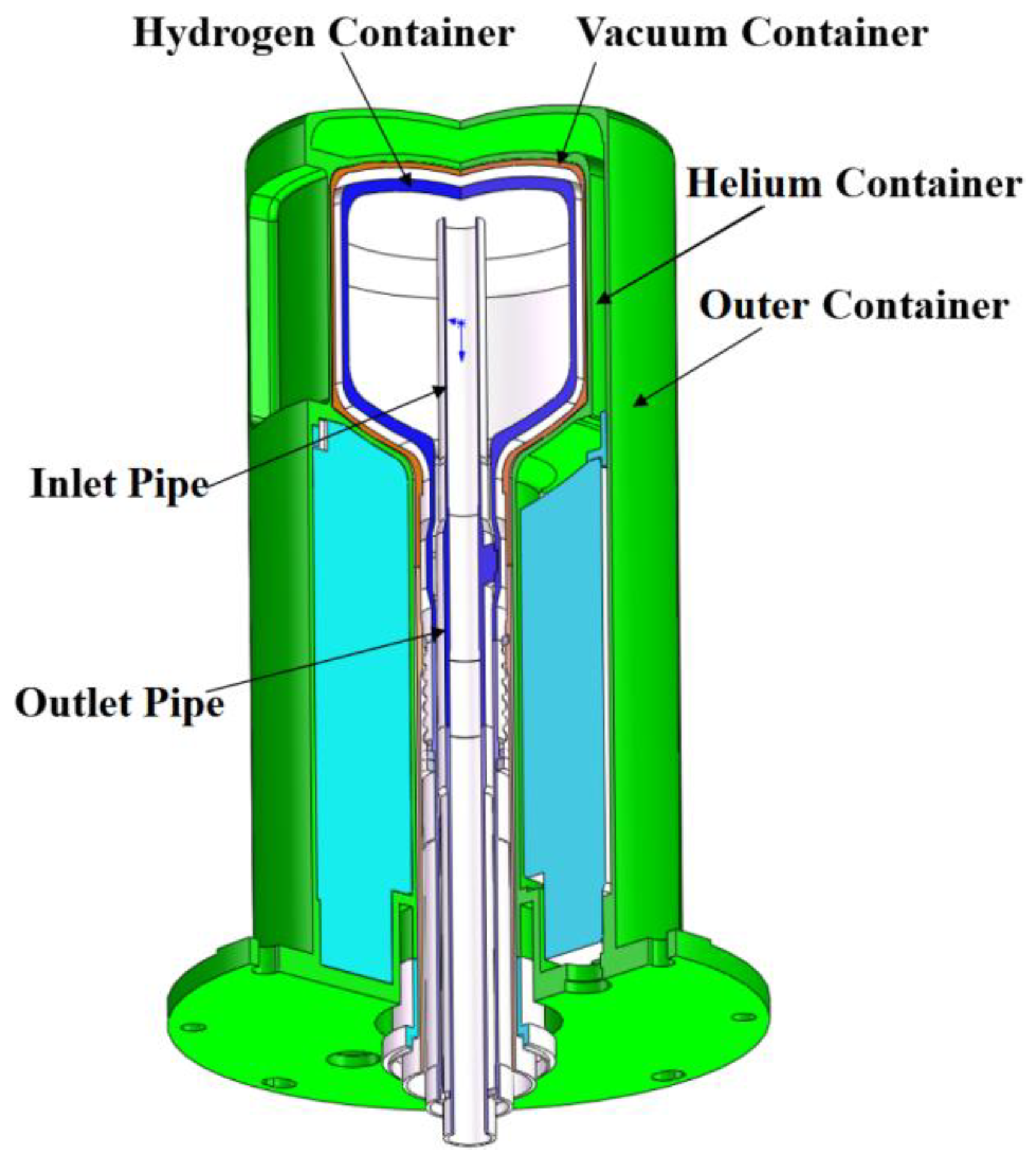
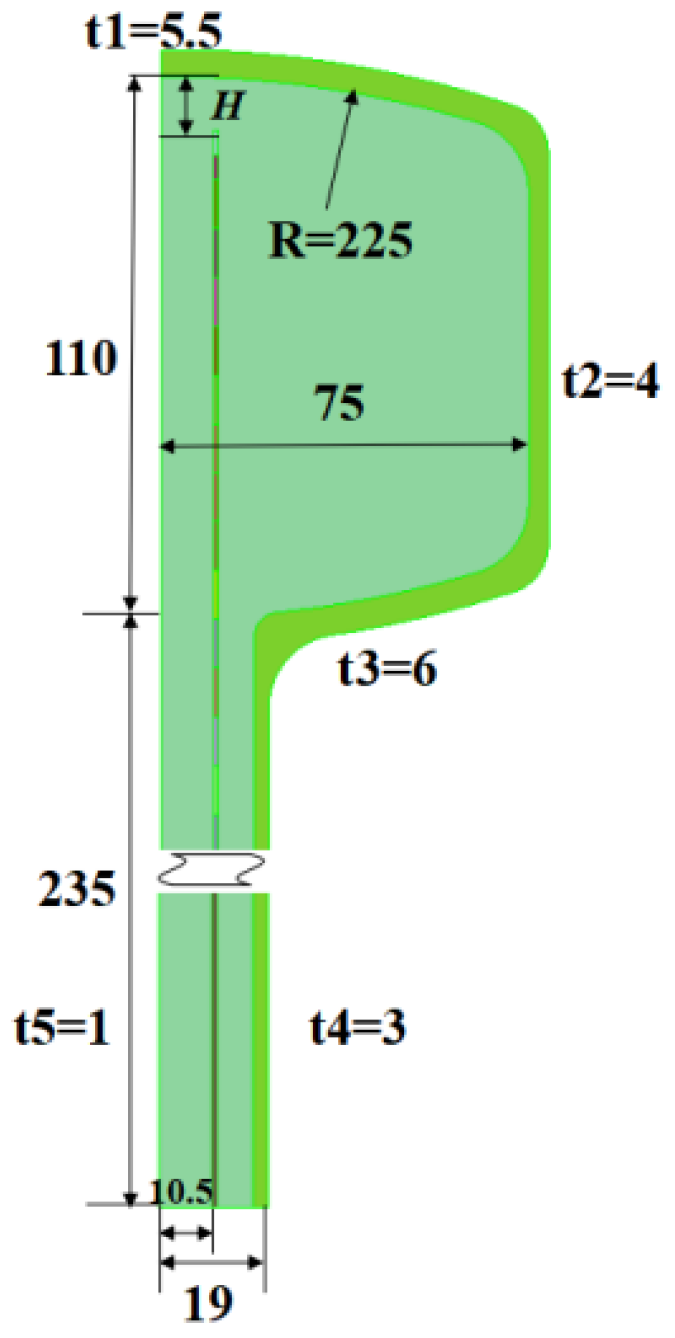

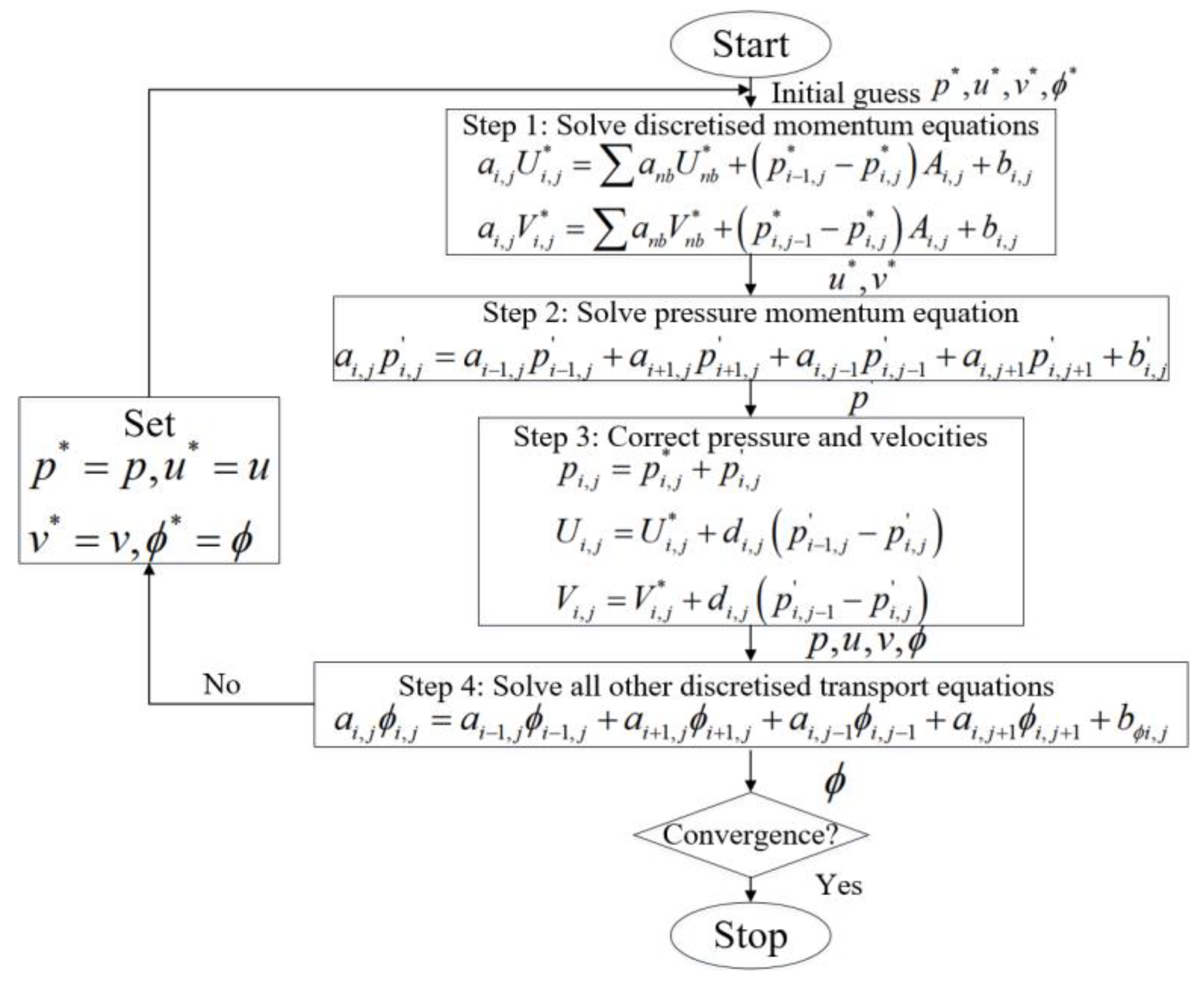
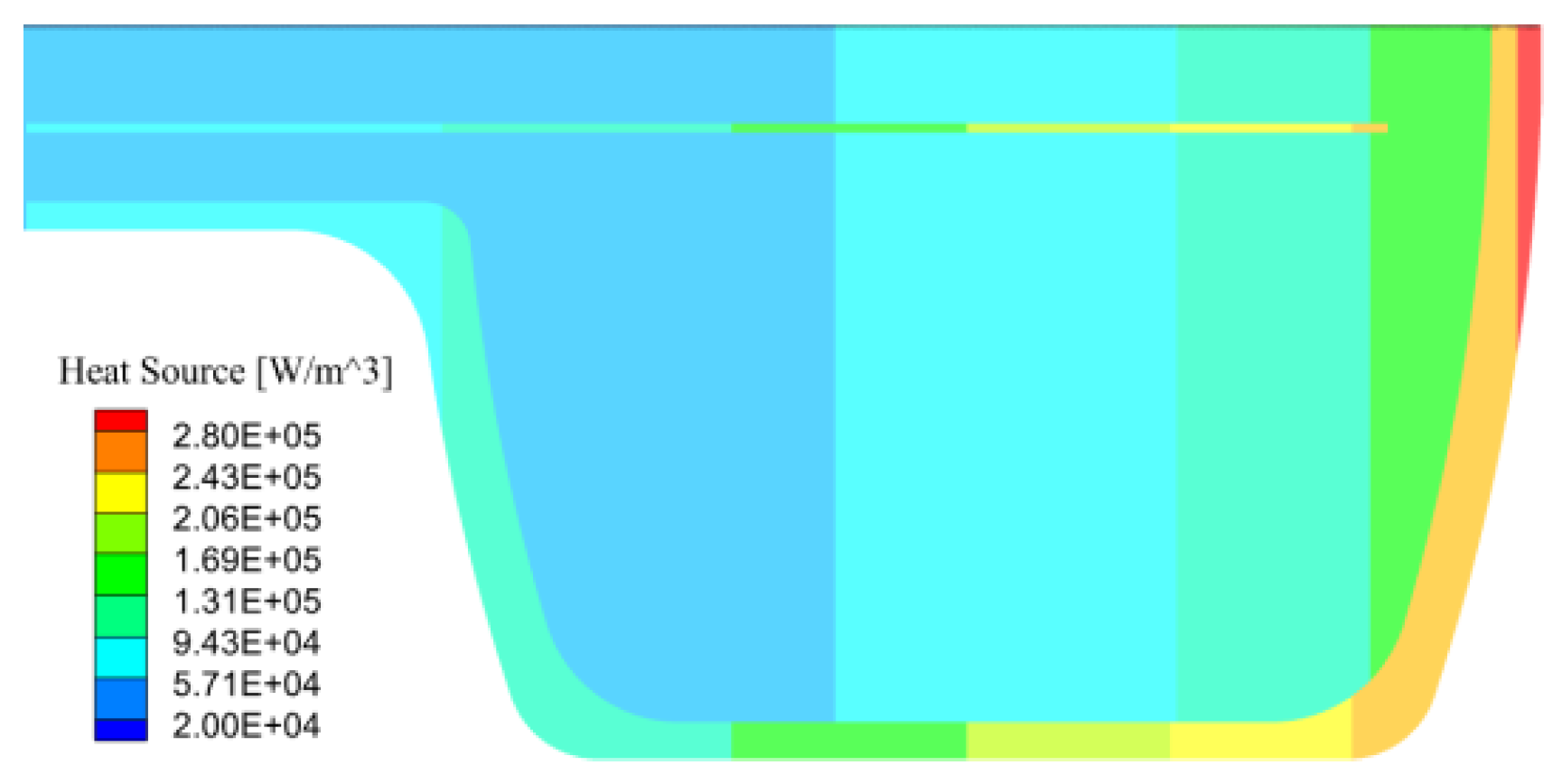
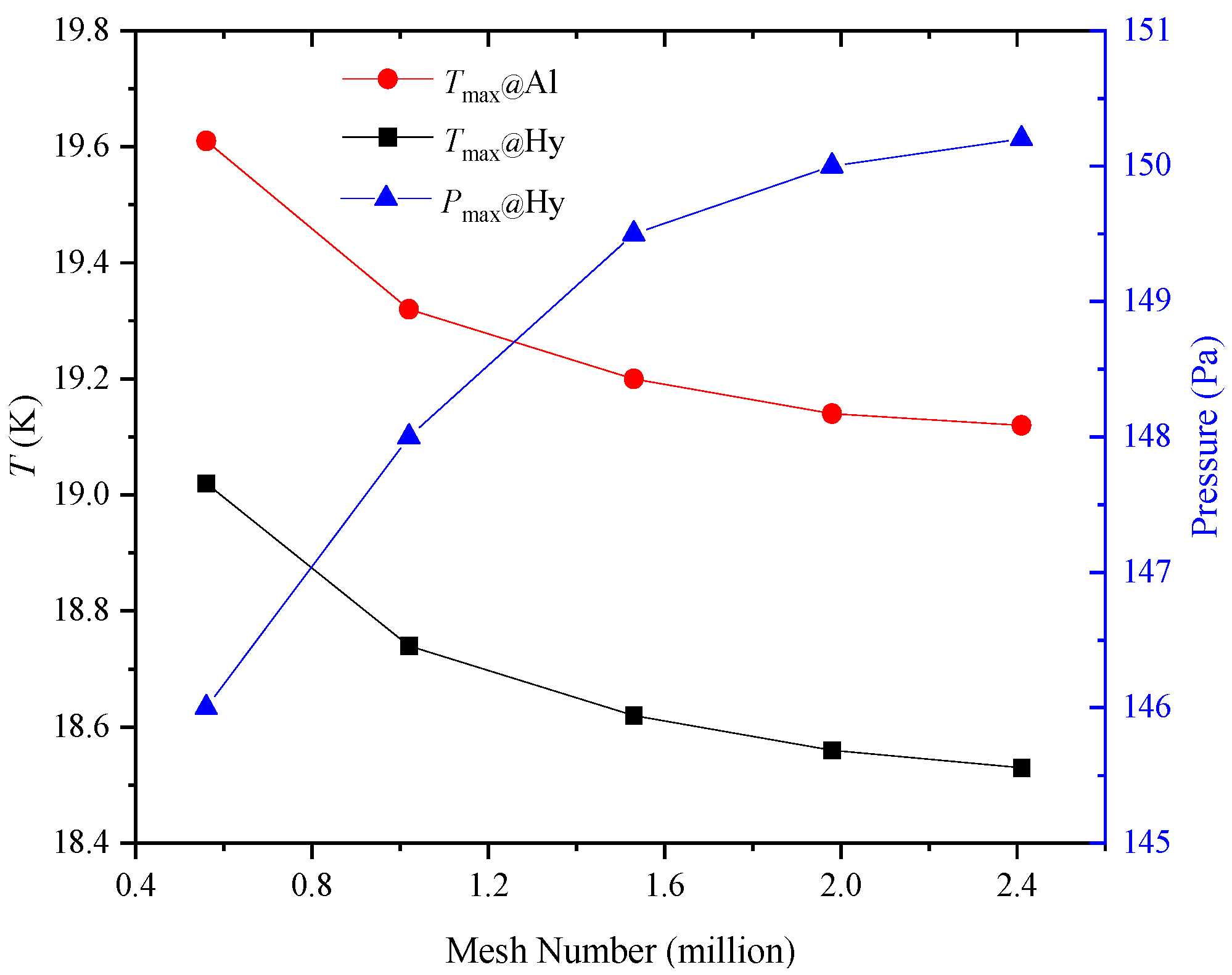
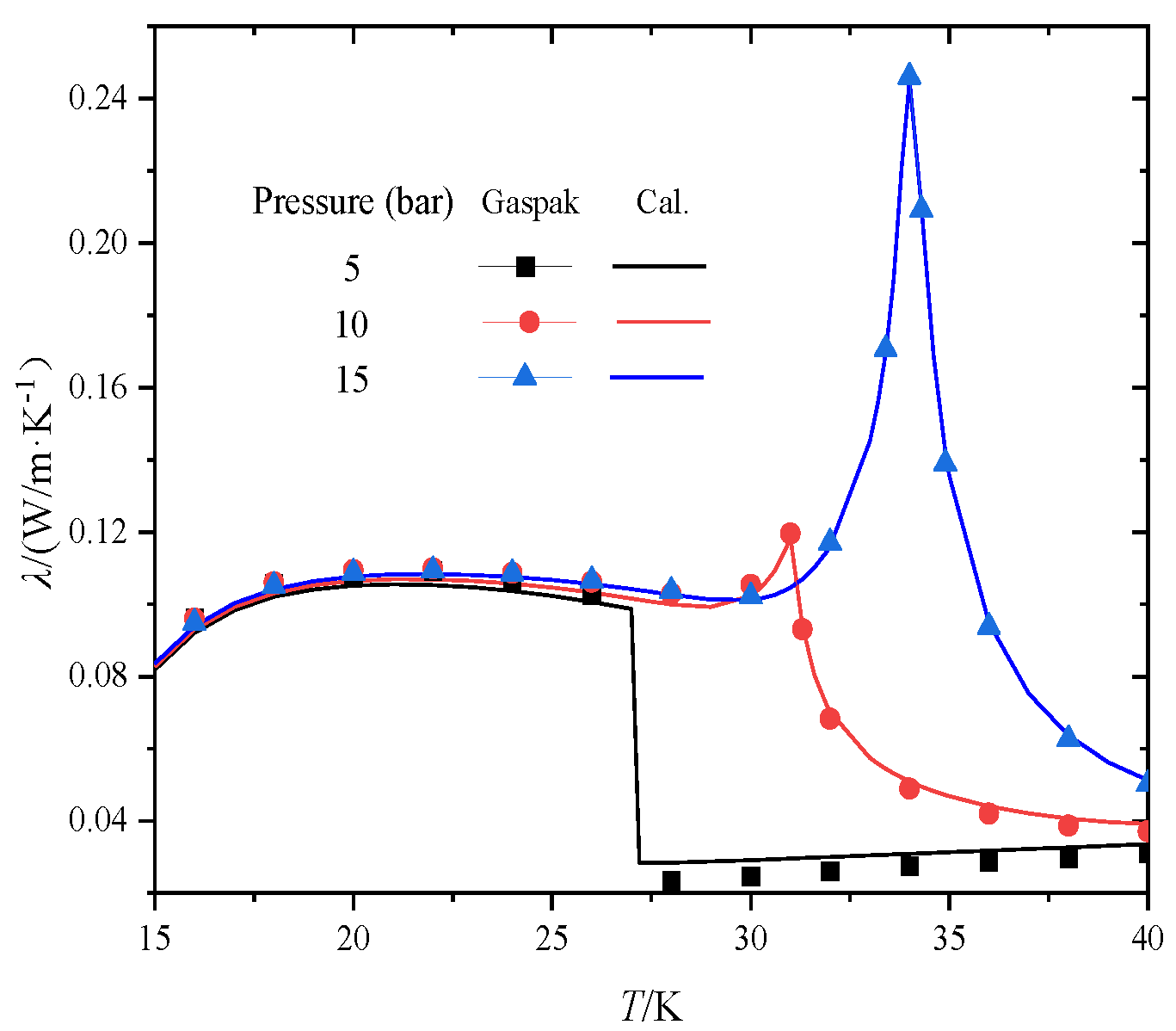

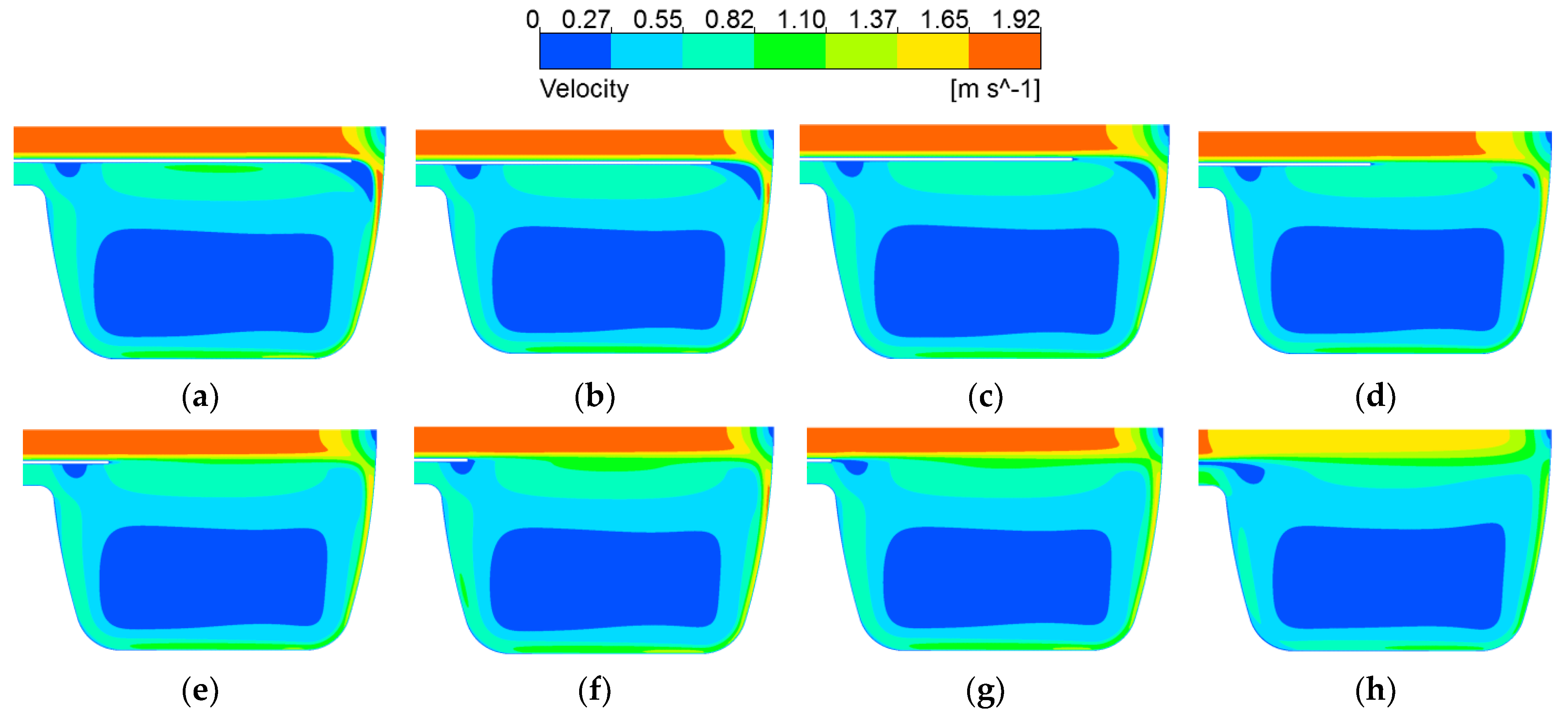
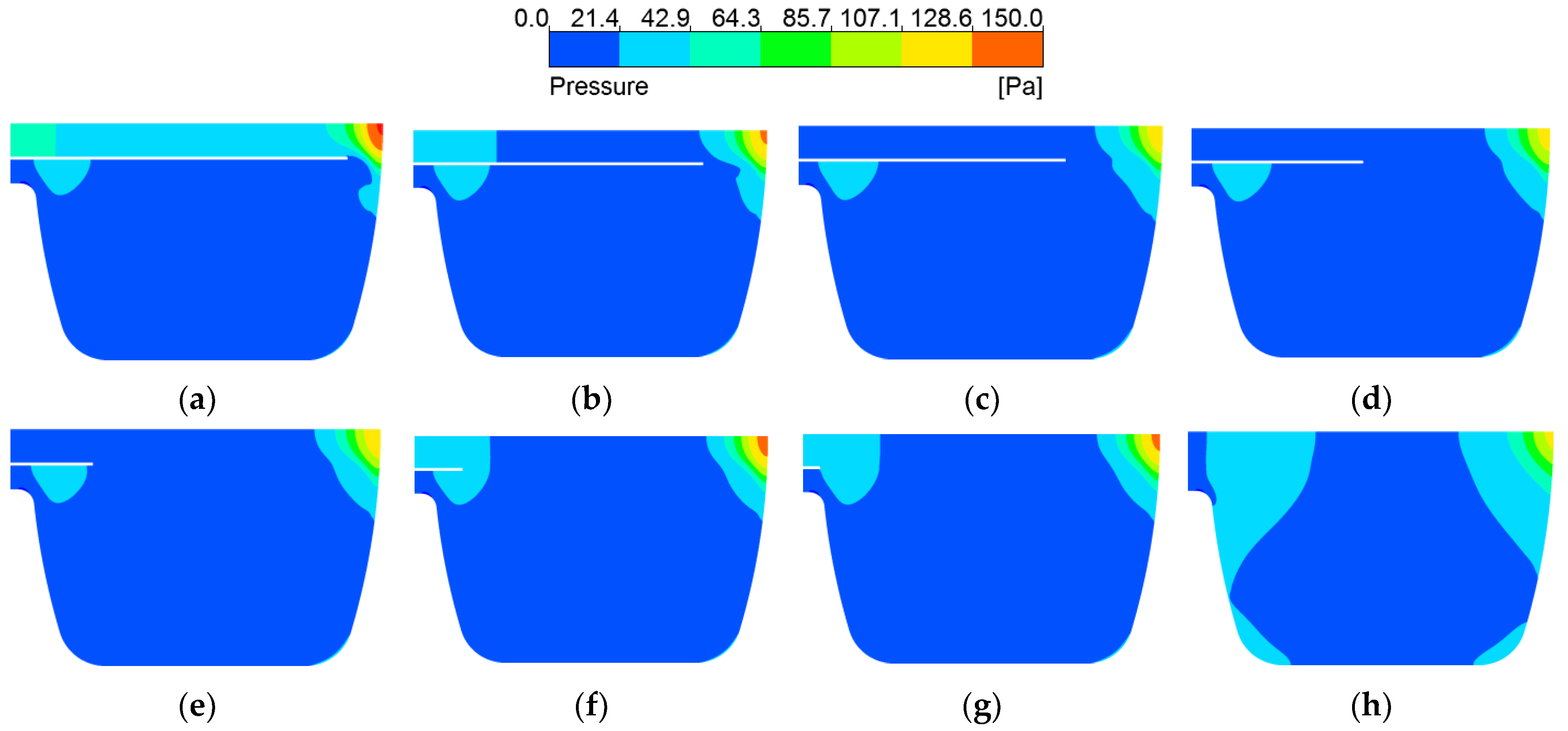
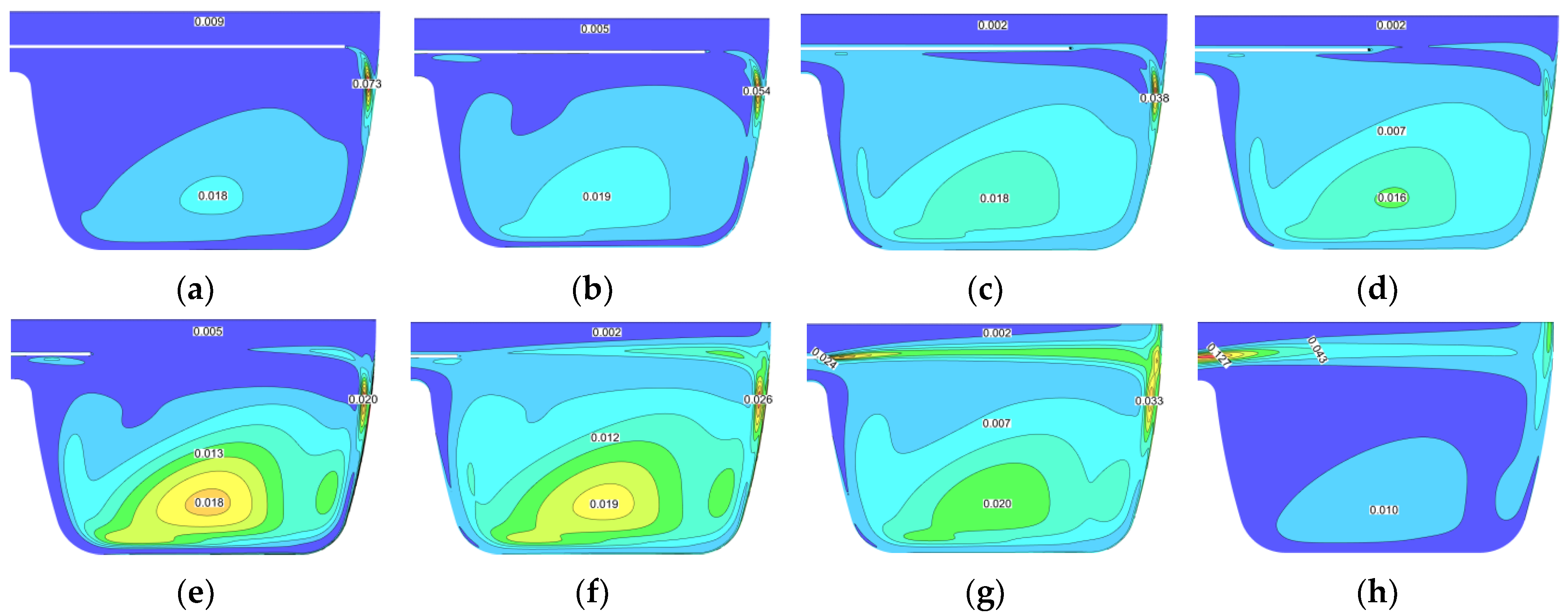
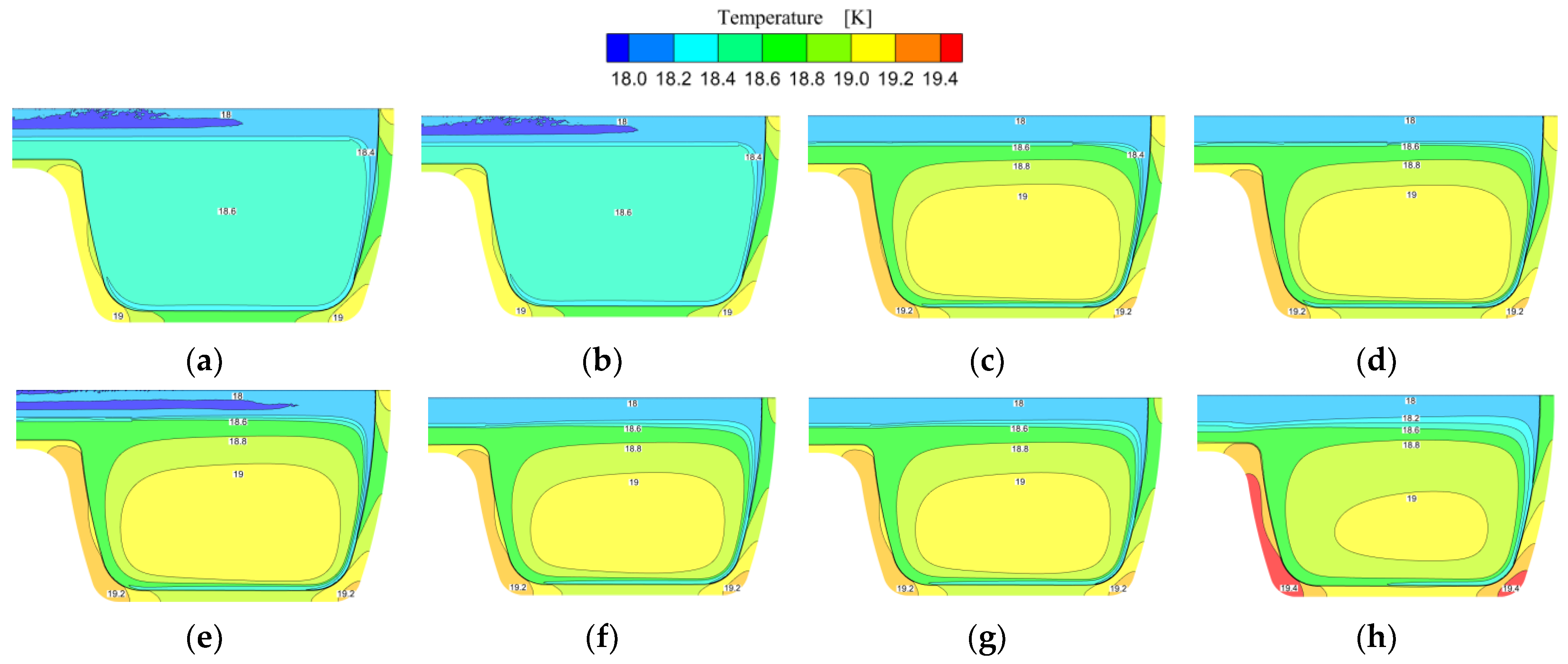
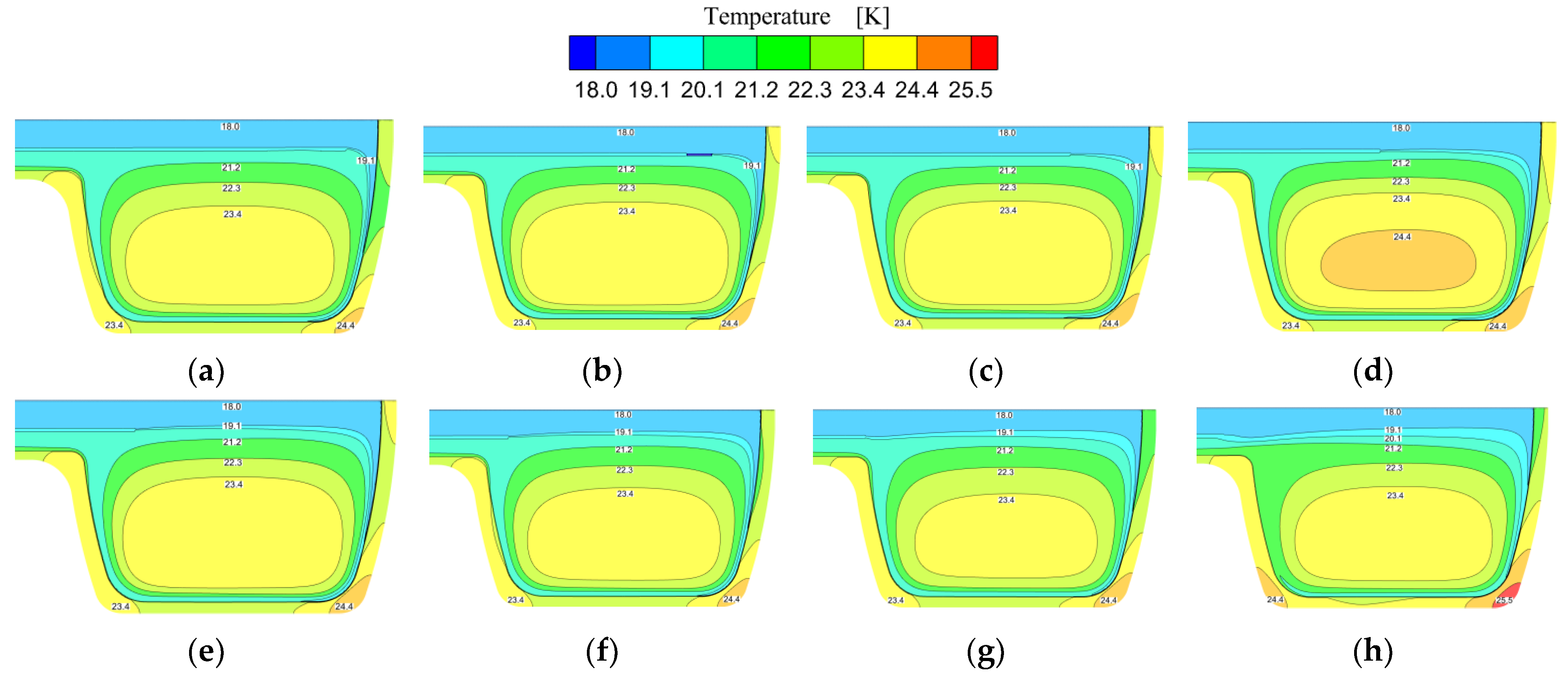

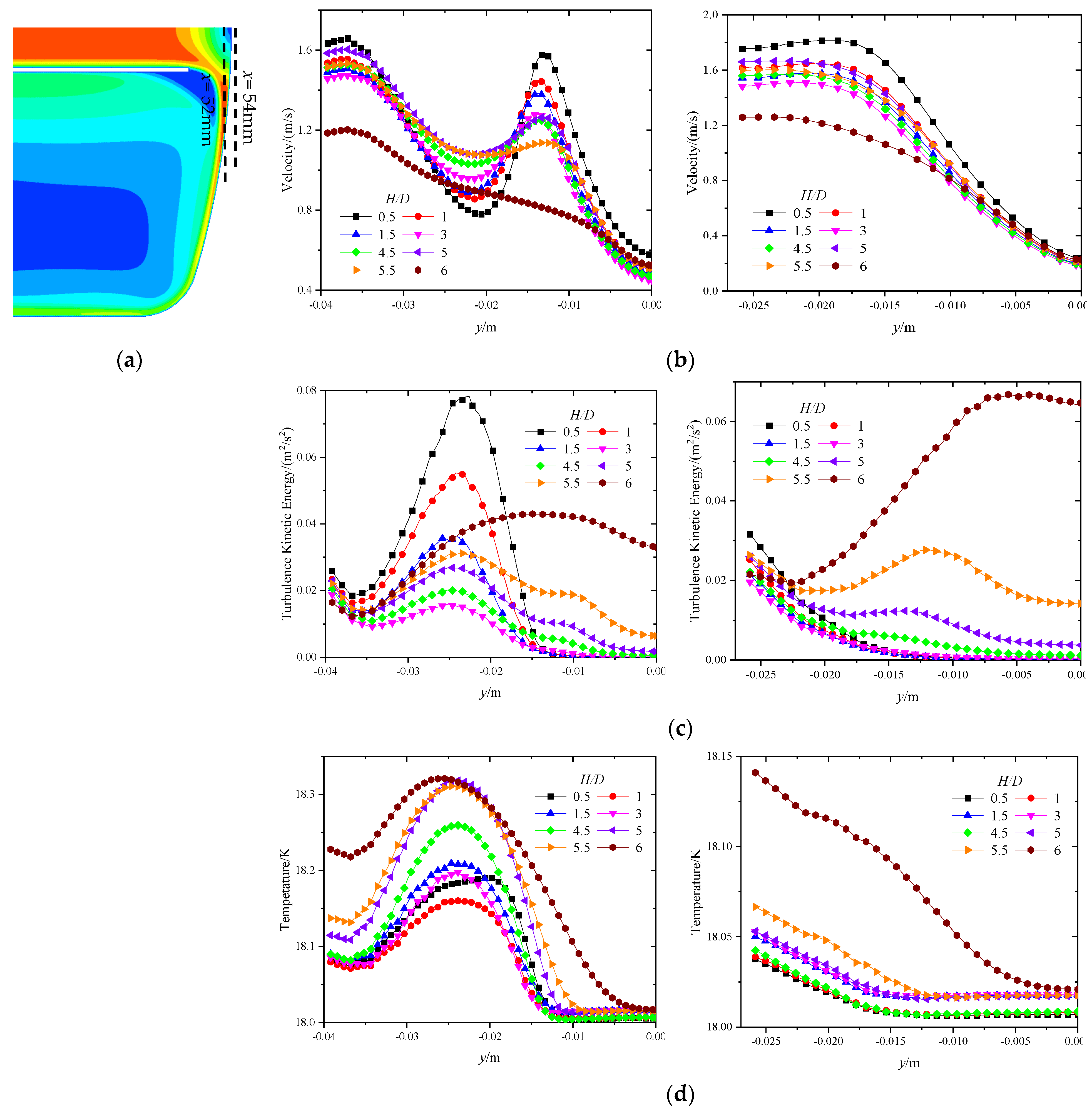


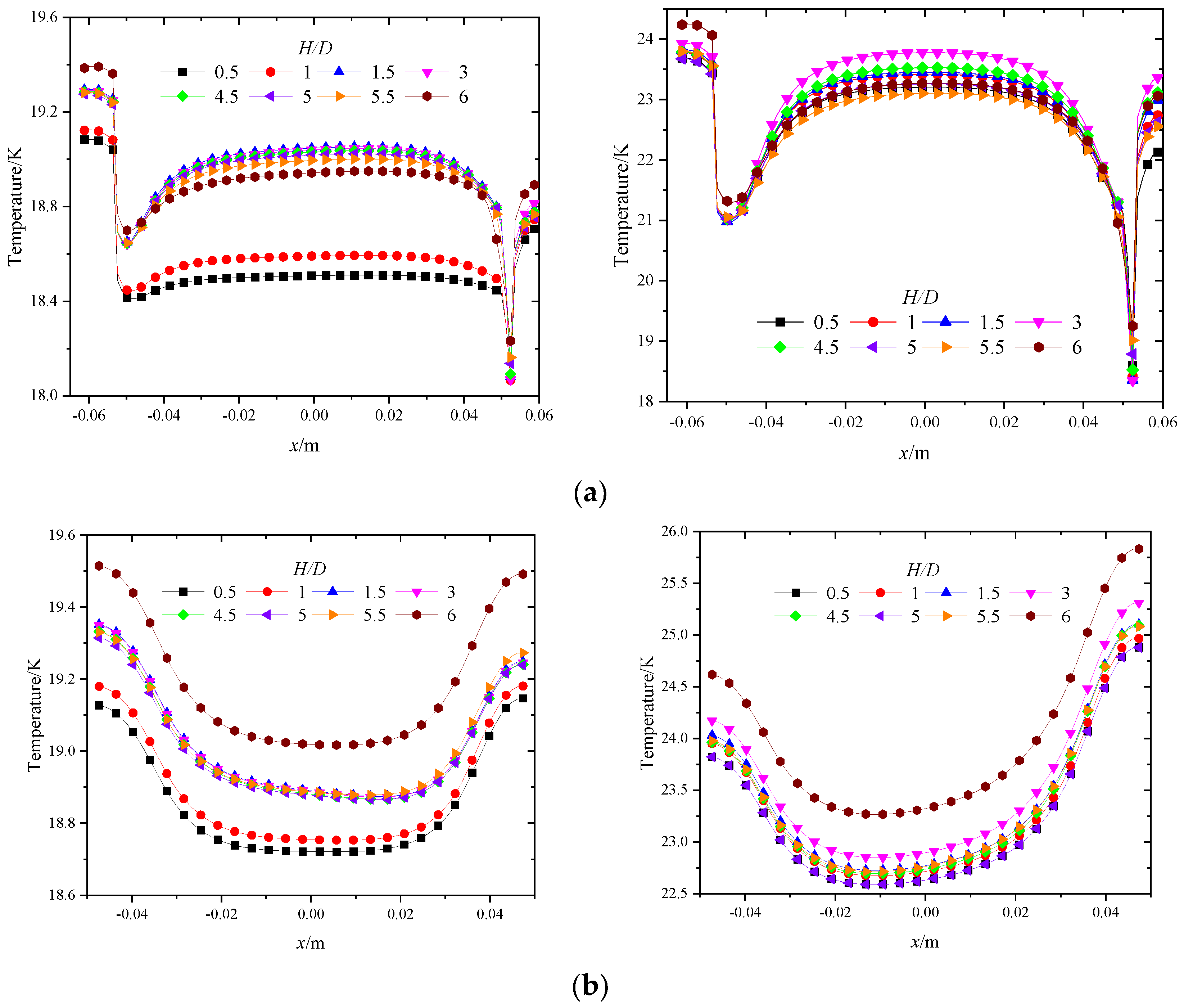
| Location | MCNPX | CFX |
|---|---|---|
| The Aluminum Container | 101 | 103 |
| Liquid Hydrogen | 149 | 152 |
Publisher’s Note: MDPI stays neutral with regard to jurisdictional claims in published maps and institutional affiliations. |
© 2021 by the authors. Licensee MDPI, Basel, Switzerland. This article is an open access article distributed under the terms and conditions of the Creative Commons Attribution (CC BY) license (https://creativecommons.org/licenses/by/4.0/).
Share and Cite
Tong, J.; Zhu, L.; Lu, Y.; Liang, T.; Lu, Y.; Wang, S.; Yu, C.; Dong, S.; Tan, H. Study of Flow and Heat Transfer for the Supercritical Hydrogen in Spallation-Type Cylindrical Neutron Moderator. Energies 2021, 14, 5856. https://doi.org/10.3390/en14185856
Tong J, Zhu L, Lu Y, Liang T, Lu Y, Wang S, Yu C, Dong S, Tan H. Study of Flow and Heat Transfer for the Supercritical Hydrogen in Spallation-Type Cylindrical Neutron Moderator. Energies. 2021; 14(18):5856. https://doi.org/10.3390/en14185856
Chicago/Turabian StyleTong, Jianfei, Lingbo Zhu, Yiping Lu, Tianjiao Liang, Youlian Lu, Songlin Wang, Chaoju Yu, Shikui Dong, and Heping Tan. 2021. "Study of Flow and Heat Transfer for the Supercritical Hydrogen in Spallation-Type Cylindrical Neutron Moderator" Energies 14, no. 18: 5856. https://doi.org/10.3390/en14185856






